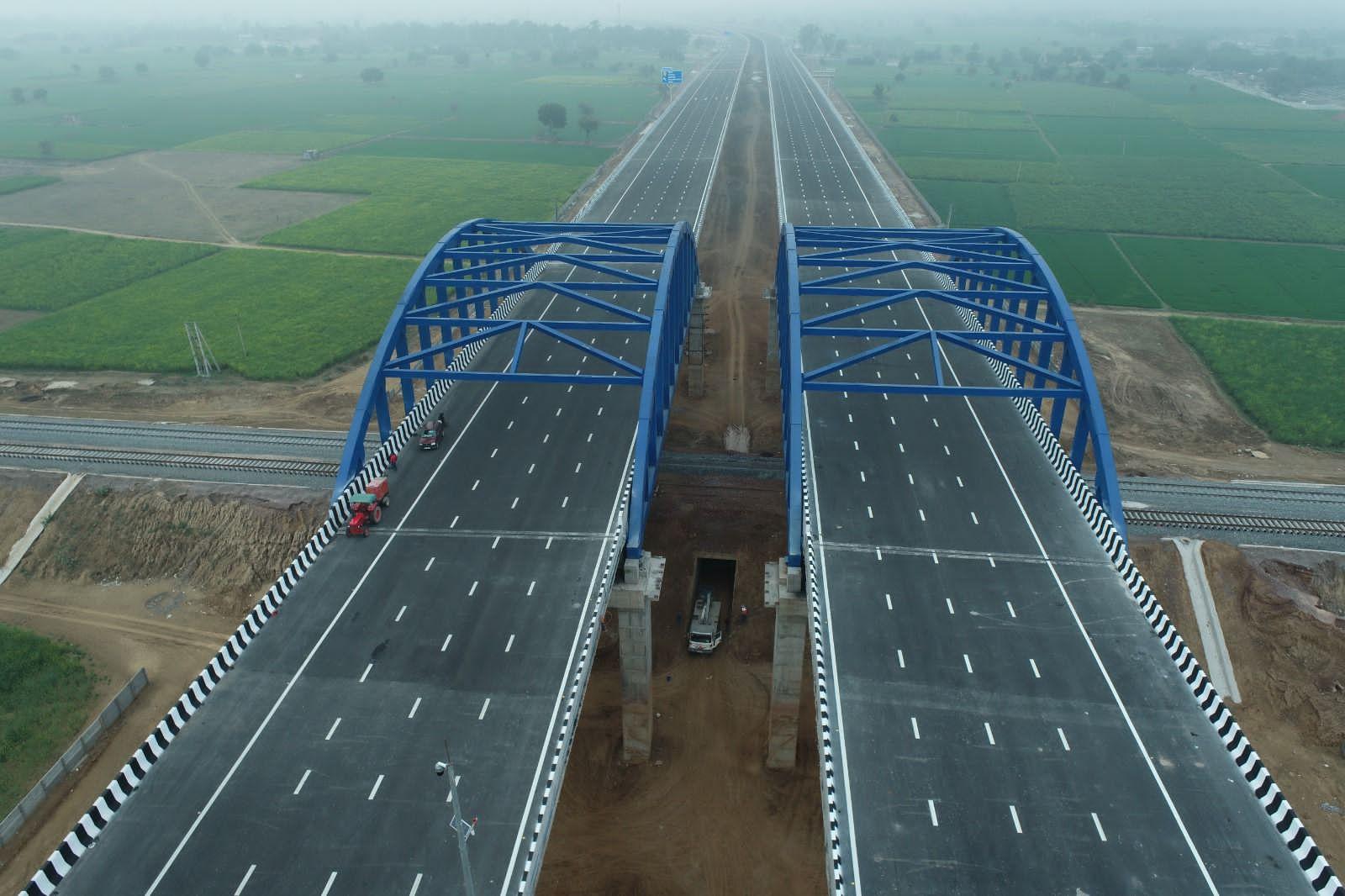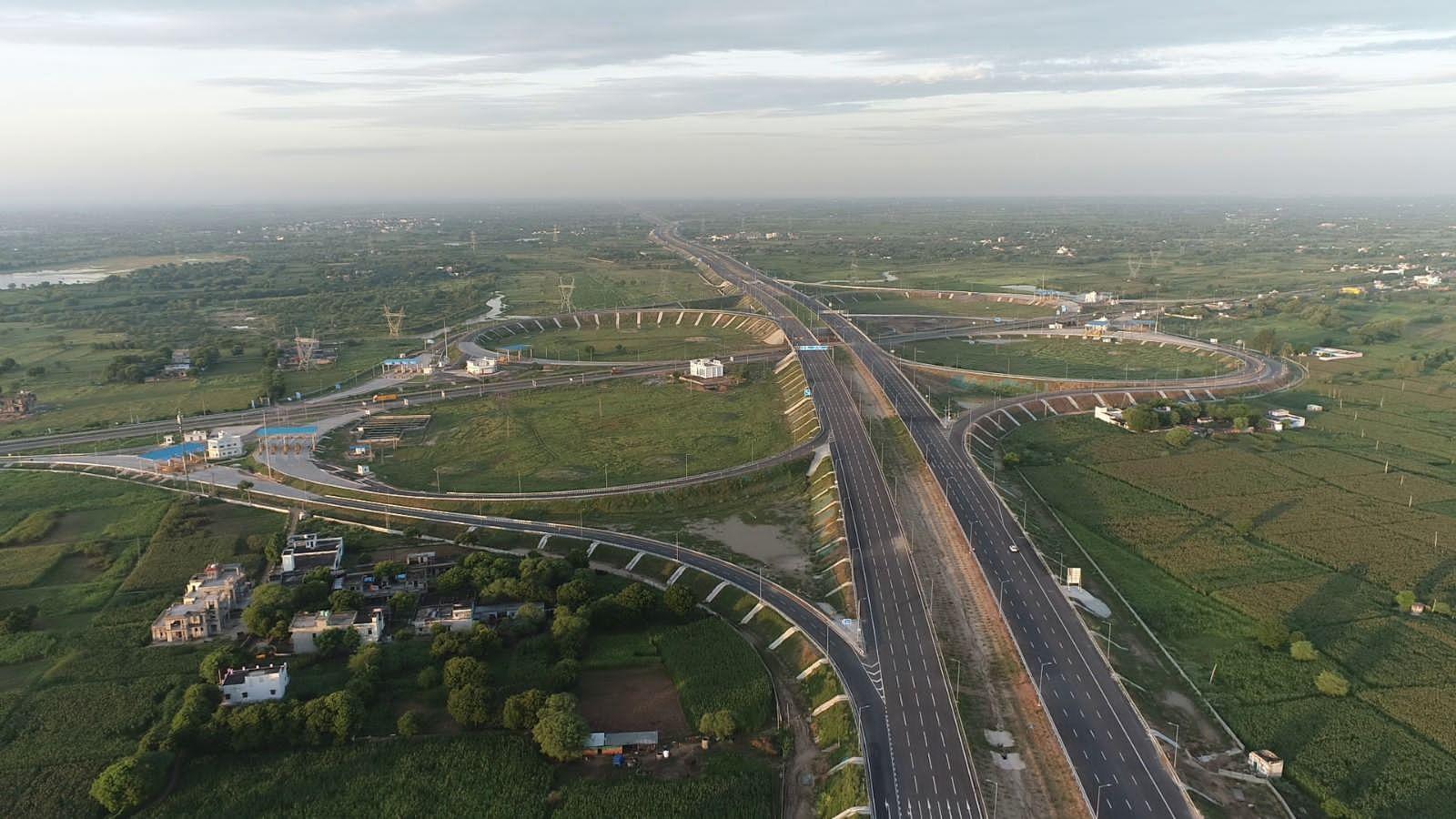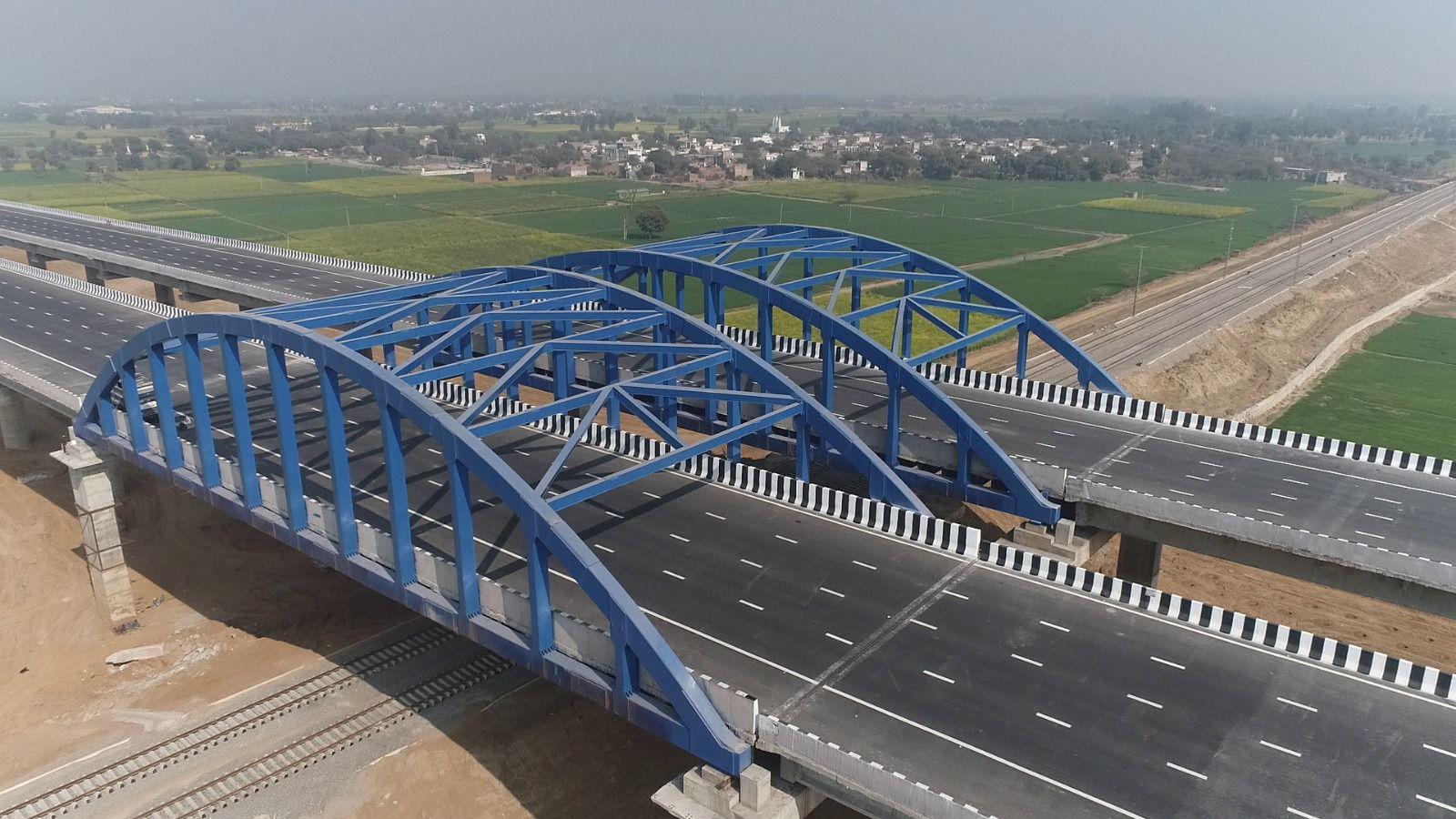
PM Modi has recently inaugurated the 246-km Delhi-Dausa-Lalsot stretch of the Delhi-Mumbai Expressway, which is said to reduce the travel time by 12 per cent from the National capital to Jaipur, a distance of about 280 km, from five hours to about three hours. The 1,350 km long Delhi Mumbai Expressway will provide easier connectivity to the cities of Ujjain, Bhopal, Jaipur, Kota, Chittorgarh, Indore, Ahmedabad and Vadodara. Construction on this project is expected to be completed by March 2024. Till now, the Expressway has held many records in its name. Read the SURFACES REPORTER (SR)'s this post to learn vital facts about the Delhi-Mumbai Expressway:
The foundation stone of this ambitious project was laid on March 8, 2019, by Union minister Nitin Gadkari in the presence of ministers Sushma Swaraj and Arun Jaitley.
Achieved Multiple Records
Contractor Patel Infrastructure created a world record for constructing a 2.58 km length of 4-lane width cement concrete road within 24 hours on the Delhi-Mumbai express highway in Vadodara, Gujarat. The firm used a German-made Wirtgen concrete paving machine in this stretch. Private developers achieved another feat in creating a 26 km single-lane road in 22 hours in Sholapur - Bijapur section.
 Also known as Delhi-Mumbai Industrial Corridor, the Expressway (DME) holds a record in the road construction sector for the highest quantity of bituminous mix laid in hundred hours. PNC Infratech Limited - the front-ending infrastructure development firm has achieved this incredible feat of laying the highest quantity of bituminous mix on the road in 100 hours. The firm received a certificate from the India Book of Records for constructing an 8-lane access-controlled expressway starting from the junction with NH-47 near Bhamiya village and ending at the junction with SH-175 in Baletiya village in Panchmahal district.
Also known as Delhi-Mumbai Industrial Corridor, the Expressway (DME) holds a record in the road construction sector for the highest quantity of bituminous mix laid in hundred hours. PNC Infratech Limited - the front-ending infrastructure development firm has achieved this incredible feat of laying the highest quantity of bituminous mix on the road in 100 hours. The firm received a certificate from the India Book of Records for constructing an 8-lane access-controlled expressway starting from the junction with NH-47 near Bhamiya village and ending at the junction with SH-175 in Baletiya village in Panchmahal district.
The modern expressway has been planned with several world-class features:
Wayside Amenities
The Expressway will have almost 93 wayside amenities such as hotels, ATMs, food courts, retail shops, fuel stations and charging stations for electric vehicles. Beautifully designed village haats are also being created to support local artisans, local handcrafts, and fruit and vegetable sellers. The government's One-District One-Product initiative will also get momentum with this idea.
Helicopter Ambulance
It is the first expressway in India that will have helipads. A helicopter ambulance service will be provided to carry accident victims. The drone services will also be used for this purpose. Further, at every 100 km, this Expressway will contain fully equipped trauma centres.
Electric Highway
The project also works as an e-highway where buses and trucks can be charged while running. Vehicles will be able to run at a speed of 120 km per hour which will oust the logistics cost by 70 per cent as heavy vehicles will run on electricity rather than diesel. The entire expressway has 4 dedicated lanes for electric vehicles out of 8 lanes.
Unhindered Wildlife Crossings
This is the first Expressway in Asia and the only second in the world which has animal overpasses to ease wildlife crossings. The expressway with a combined length of 2.5 km of this 8-lane wide expressway will go under 5 wildlife corridors on the stretches. One of these crossings will be a tunnel in Mukundara Hills National Park, which will be the country's first 8-lane wide tunnel. The crossing over the expressway will have 8- metre-tall noise barrier walls on either side and the open extension of the expressway passing through the wildlife corridor will have 6-foot-tall walls on both sides to avoid animals and pedestrians from entering.
 Side Spurs
Side Spurs
The longest expressway will have several side spurs in the future to allow commuters to get connected with other major cities. Side spurs or spur routes/roads are basically short roads creating a branch from an expressway. The construction work of 30 km 6 lane side spur connectivity to upcoming Noida’s Jewar International Airport from the DND-Faridabad-Ballabhagh Bypass KMP Link on this highway has already started. Similarly, the construction work of the 67 km 4-lane Jaipur Spur from Bandikuihas also started in March 2022. Further, the construction work of a 130 km 4-lane side spur in Ujjain linking Garoth – Ujjain in Madhya Pradesh will also soon start on this expressway.
Environment friendly
The entire expressway is designed keeping in environment, wildlife and economy in mind. It is one of the most ecological expressways with a tree cover of 20 lakh trees. These are watered using drip irrigation with a rainwater harvesting system integrated at every 500 metres along the entire stretch. Further, at night, the entire expressway will be illuminated with a mix of power supplies from solar energy and state grids.
Technologically Sound Expressway
The new expressway is considered to be India's most advanced highway. Enhanced modern technology is used right from toll collection to Intelligent Traffic and Incident Management. Cameras are installed all along the highway to monitor the entire length. It also incorporates the use of other hi-tech features such as the use of Automatic Number Plate Recognition cameras for lane violations and speed cameras for speed violations.
Construction Details
The project is an example of the latest technology and premium-quality paving throughout the stretch. Generally, for paving it is essential to pave the width of the road in diverse lanes as surfacing the full width of the pavement such as a mammoth project like the Delhi – Mumbai Expressway is usually unfeasible. This project hence includes the flexible pavement section, which includes base layers such as bituminous layers varies in width from 19.25 to 18.75 meters and a WMM width of 19.55 meters.
 Further, the project futures the longitudinal joint type which is a must for such projects. As it is mostly seen that differences in the mat plasticity and temperatures cause the de-bonding of the fresh Hot Mix Asphalt with the older Asphalt lane and this causes a longitudinal crack between the asphalt mats in a long run. This allows the intrusion of water into the pavement system, which potentially deteriorates the foundation of the pavement involving extensive repairs.
Further, the project futures the longitudinal joint type which is a must for such projects. As it is mostly seen that differences in the mat plasticity and temperatures cause the de-bonding of the fresh Hot Mix Asphalt with the older Asphalt lane and this causes a longitudinal crack between the asphalt mats in a long run. This allows the intrusion of water into the pavement system, which potentially deteriorates the foundation of the pavement involving extensive repairs.
Thus the most effective way of paving methodology to be adopted in such a project is the longitudinal joint type and its position that ensures strong interlocking of joints which do not allow water intrusion into the layer and hence shun the cracking and ravelling of pavement. Further, the hot and hot joint proves to be the best among all the varied conventional joint preparation and repair methods available.
The Delhi-Mumbai Expressway will start a new chapter of economic growth in the area. Experts believe that this 1,350 km long single expressway will have a positive impact on India's infrastructure landscape. According to them, it will significantly boost the demand for both residential and commercial properties in the adjacent regions. Developed at a cost of more than Rs 12,150 crore, this futuristically planned expressway will not only bring two cities closer but will also bring several opportunities and growth near to reality for the people.
Image Source: IndiaToday
Keep reading SURFACES REPORTER for more such articles and stories.
Join us in SOCIAL MEDIA to stay updated
SR FACEBOOK | SR LINKEDIN | SR INSTAGRAM | SR YOUTUBE
Further, Subscribe to our magazine | Sign Up for the FREE Surfaces Reporter Magazine Newsletter
Also, check out Surfaces Reporter’s encouraging, exciting and educational WEBINARS here.
You may also like to read about:
594 km long Ganga Expressway| Longest in India | Facts check | Uttar Pradesh | SURFACES REPORTER News Update
Delhi-to- Meerut now in 45 mins with the new DME ‘Smart’ Highway | News Bulletin | Surfaces Reporter
and more...